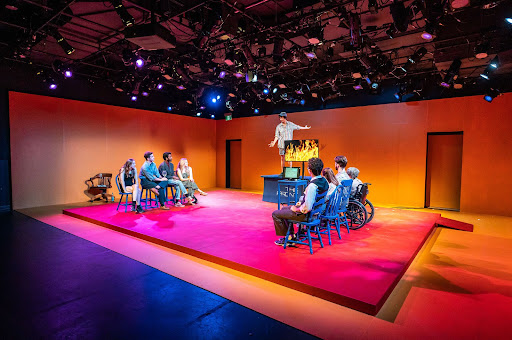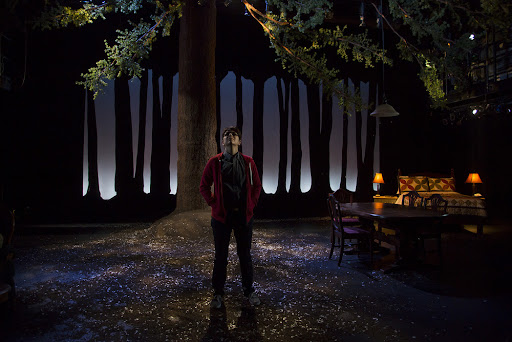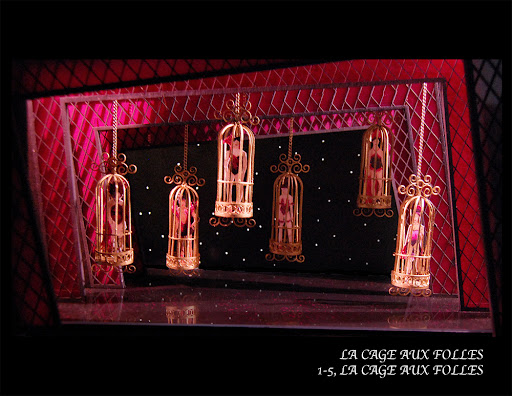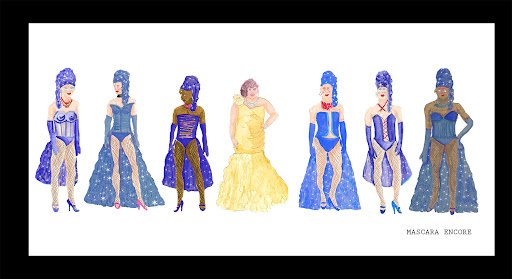Brian Dudkiewicz on storytelling through design
Set & costume designer Brian Dudkiewicz (he/him) began working at the School of Performance last year. Now, Brian is the Design Mentor for the third year productions of Eurydice and Edward II.
Brian received his Masters in Theatre design from the Yale School of Drama, and has been working both nationally and internationally ever since. Brian has worked in every kind of theatre imaginable - from “off-off-off-off Broadway,” to designing for some of the largest theatres in North America, Brian has done it all.
Brian believes the role of the designer is to tell a story through their design.
Everything that you put on stage is there to serve a purpose. You’re helping to create a world for these characters to live in. It’s through design that you give them a home base for the action to happen. You’re telling a visual story.
Design holds just as much importance to the story as all the other aspects which come together to create a show. “You’re contributing to the storytelling just as much as the acting is. You should be able to look at design, and be moved the same way you are by the action on stage.”
As the Design Mentor this semester, Brian’s job is “to be there to help the design students along with their experience on the shows. I’ve been involved from their first conversation with the directors. I’m not designing the shows for them, I’m not even helping them come up with the design. I’m taking what they’re presenting to me, and helping them figure out their ideas.”

Photo by Dahlia Katz. Set design by Brian Dudkiewicz.
For students, while they may have had many classes focused on set and costume design, this is their first time putting those theories into practice. “They haven’t experienced working with a professional director, and having their design produced.” It’s Brian’s job to help oversee these communications, and guide students through the process - from budgeting, to conversations with directors, to realizing their designs.
“It was really important for me not to impose my design or my ideas onto this process. I wanted it to always be about what they bring from their conversations with directors, and for me to help them think through that, rather than me saying ‘this is what I would do.’”

Sagittarius Poncerosa, by MJ Kaufman /// Yale School of Drama, Iseman Theater
Director: Margot Bordelon , Set: Brian Dudkiewicz , Costumes & Puppets: Hunter Kaczorowski, Lighting: Oliver Wason , Sound: Matthew Suttor
The opportunity for students to go through the design process from beginning to end is a crucial part of their development. “The best learning in my opinion,” Brian shares, “is hands-on learning. Being able to actually jump in, headfirst, and be a part of a real project.” Class projects offer a ton of value - they encourage creativity, and allow students to think outside the box when it comes to their designs. But in class, “we often fudge reality a little bit.” We are flexible on the dimensions of the stage which the set is theoretically designed for, or we imagine a flexible budget for the costumes. But working on a real production challenges students “to take everything they’ve learned in class, and achieve something just as successful, within the realities of the production.”
Being online for this process isn’t new to Brian, or to the production & design industry. “Working with theatre companies and people all over the country, sometimes even in other countries, other continents - so much of the process is online already.”

Book by Harvey Fierstein, music and lyrics by Jerry Herman
Class Project
Set, lighting & costumes: Brian Dudkiewicz
“I’m located in Toronto, but I’m being hired to design in theatres all over the place. The theatre isn’t going to fly me in for every meeting they want, so that often happens over zoom. Zoom isn’t a new thing for this industry by any means.”
When it comes to teaching online, Brian “tried to design the courses around the online format.” From changing the way things are scheduled to accommodate more one-on-one time, to bringing in guest artists who otherwise wouldn’t have been in the city, Brian has found ways to make the best of the online platform. “One time, I brought in a few guest artists to talk about collaboration - a Director who was in Hamilton, I was in Toronto, and a Production Designer who was in Halifax, and we discussed a show the three of us worked on together. If we were in person, neither of them would have been able to make it.”
Zoom also allows Brian to be more available for his students, as he guides them through the design process. “This morning, one of the designers sent me a note with some questions. Because there wasn’t the expectation of meeting in person,” which involves finding a common break and travelling across campus for a formal meeting, “I said, ‘why don’t we jump on a quick zoom call.’ We did, it was only an eight minute conversation, but I was able to help them in the moment.”
One of the adjustments, for Brian and for the students, is designing for the camera rather than a live audience. However, much of the process remains the same. With a live audience, students complete a sightline study to determine how things will look from the audience. Instead of testing their designs on stage, students are encouraged “to get their pieces in front of cameras to test it out.” As always, students need to be ready to adapt, “and possibly make some quick changes once they get into the tech process.” But flexibility is a staple of this industry, and this experience only better prepares students for the reality of the profession.

Book by Harvey Fierstein, music and lyrics by Jerry Herman
Class Project
Set, lighting & costumes: Brian Dudkiewicz
When asked what Brian hopes his students learn from working with him, he said that in a time when the pandemic leaves many shows cancelled and future plans up in the air, he hopes students learn to reconnect with their love for design.
“It’s an industry that isn’t always the easiest to navigate, but you do it because you love it. Make sure you don’t lose that… Take that minute to reflect, to find that love that you’ve had. Take every experience you can as a chance to learn and grow. I’m someone who’s now been working for 10 years doing this, and I’m still learning with every show I do. The industry is changing and adapting, and I am too.”
